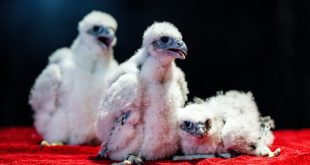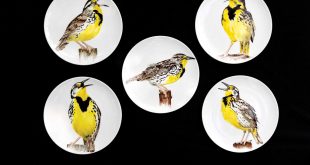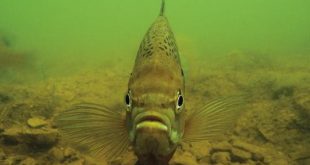Nebraska’s diverse landscapes provide habitat for a wide array of moth species, each uniquely adapted to its environment By Brianna Nugent As the sun sets over Nebraska’s expansive plains and rolling hills, a hidden world comes to life — the realm of moths, creatures of the night whose diversity and adaptations often go unnoticed. National Moth Week, celebrated globally each year, offers a unique opportunity to delve into the fascinating world of these often-overlooked insects and appreciate their importance in …
Read More »Foraging for Wild Fruits and Berries in Nebraska
I always get rather impatient this time of year. Is it because of the weather being erratic, if not so hot, humid and hazy at times? No. is it that sweet corn picking season is almost here. No. Is it that the hunting seasons are just around the bend? No. Then, why? Well, I am a gatherer, a prairie wanderer, and I am anxiously waiting to harvest elderberries during these dog days of summer. However, it’s not quite time yet. …
Read More »The Builders of the Wild – Beavers
Beavers exemplify the intricate relationship between wildlife and human communities By Monica Macoubrie, Wildlife Education Specialist Dwelling in the waterways and wetlands of Nebraska, beavers (Castor canadensis) are the architects of the Plains, shaping landscapes with their industrious dams and lodges. These remarkable rodents play a crucial role in the state’s ecosystem dynamics. From their adaptations in aquatic habitats to their significant influence on local biodiversity and water management, the presence of beavers tells the story of a species’ resilience …
Read More »Marbleseed – An Admired Plant
Marbleseed thrives in very dry, gravelly or rocky hilltop prairies where only the tough survive By Gerry Steinauer, Botanist When appearing as a guest on podcasts or radio shows, I am often asked, “What is your favorite plant?” I suppose the interviewer thinks this is a great icebreaker and that I will have a pat answer. I don’t, however, and there’s always an uncomfortable pause as I ponder. The problem is that I don’t have a favorite plant. Nebraska has …
Read More »Surviving the Scorch – How Animals Beat the Heat
When it comes to beating the heat, animals have their own quirky playbook. By Monica Macoubrie, Wildlife Education Specialist Imagine being a furry creature in Nebraska during the peak of summer — it’s like wearing a winter coat in a sauna! While we humans crank up the AC, sip iced tea and lounge in front of fans, wildlife must get creative to beat the heat. Picture a prairie dog retreating to its underground burrow or a jackrabbit flashing its oversized …
Read More »Summer Checklist for Hunters
Summer is here. It’s hot. It’s humid. Tomatoes are ripening. Early ears of sweet corn are being harvested. Boating, swimming, tubing and fishing are being widely enjoyed now. But, wait a second. Hold on for a moment. For those of us who are avidly involved in the hunting lifestyle and its year-round process, summer means a myriad of things to do if we are to have a safe and successful fall hunt. I don’t know about you, but in summer, …
Read More »Return of the Falcons
A Lincoln falcon enthusiast livestreams capitol building chicks By Renae Blum Jeanne Hibbert is glowing. It’s the day after three new falcon chicks were banded at the Nebraska State Capitol Building – an event she was invited to attend and livestreamed for her falcon-dedicated Facebook page. “It was nice to be back, because we hadn’t been there since 2016,” Hibbert said, smiling. Hibbert has a lot to smile about these days. For the past 12 years, she’s managed a growing …
Read More »Wildlife Porcelain Painter
Lincoln porcelain painter Peg Pelter celebrates Nebraska wildlife. Story and photos by Jenny Nguyen-Wheatley “My joke is that if you paint a leaf too big or a petal too big, nobody really notices. But if you get the nose too big on a dog or the beak too big on a chicken, people notice,” said Peg Pelter of Lincoln, explaining the difference between painting traditional subjects such as florals and fruit to animals. Some of her most recent work highlights …
Read More »Managing Grasslands for Milkweeds and Monarchs
Practical ways landowners can increase milkweeds. Story and photos by Gerry Steinauer, Botanist The monarch butterfly is in trouble. Based on annual surveys conducted at their wintering grounds in central Mexico, the eastern North American monarch population has declined 80 percent over the past 25 years. The rapid decline has spurred the U.S. Fish and Wildlife Service to consider listing the butterfly as an endangered species. Complicating the situation, evolution has painted the monarch into a corner. They lay their …
Read More »Bluegill are a great catch in summer
It’s hot. It’s humid. Whew! Yeah, it’s summer alright. Hey, has your fishing success slowed with the conditions? I though so. Well, one fish leads the way with lots of action for anglers in the good, old summertime — bluegill. A male bluegill stands guard on its nest in a southern Nebraska pond. Underwater photo courtesy of NEBRASKAland Magazine/Nebraska Game and Parks Commission. Maybe it’s the kid in me, I don’t know. But, at 61 years of age (approaching 62), …
Read More » Nebraskaland Magazine
Nebraskaland Magazine









